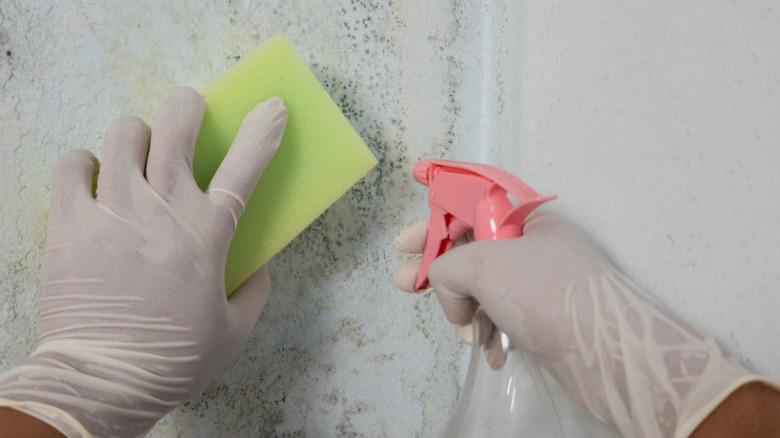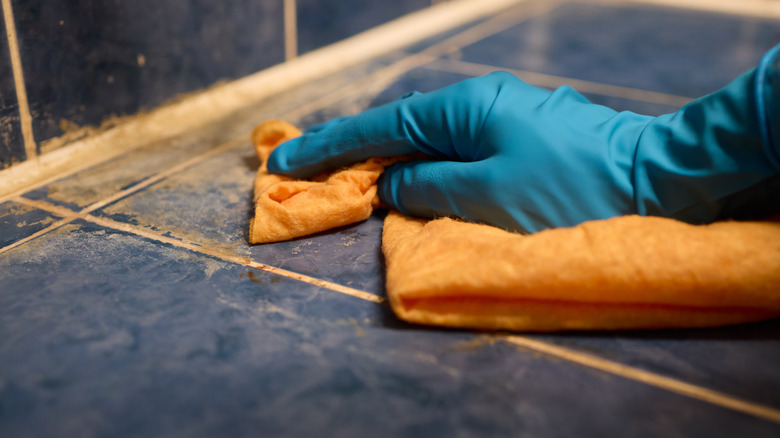The Popular Type Of Cleaner That Should Never Be Used On Mold (You Can Try, But It Won't Work)
Have you ever discovered those little mold spores in your bathroom or kitchen and reached for disinfectant wipes in a panic? It makes sense that a cleaning wipe designed to kill bacteria and viruses would do the trick, and at first glance it might seem to work. But just because you've managed to wipe away the mold you can see doesn't mean you've actually eliminated the entirety of it and there's a good chance it will just grow right back. This is because mold grows into porous surfaces, like walls, and a deeper layer of it remains even if you manage to remove the visible parts.
Common solutions for cleaning mold are vinegar or hydrogen peroxide for porous surfaces and bleach for non-porous surfaces. While few disinfectant wipes contain bleach, the type designed for home use do not, and even those that do contain bleach, vinegar, or hydrogen peroxide, won't have a high enough concentration to make a usable mold-fighting solution. Before you reach for any mold cleaner — disinfectant wipes or otherwise — you should always assess the size of the affected area to determine whether or not you should call a professional for help. Anything beyond a total of 10 square feet shouldn't be tackled by you alone. Reaching out to a professional can help you learn how to identify mold in your home and get rid of it for good.
Avoid using disinfectant wipes to clean mold and do this instead
If you decide to find DIY ways to remove mold in and around your home, an important first step is to determine where the source of the problem is and get it fixed right away. Mold thrives in moist environments and many common sources of mold-attracting moisture in the home are leaking roofs or plumbing and poor ventilation in places like the bathroom or kitchen where steam tends to be present. Once the source has been identified and resolved, you can move on to the actual cleaning of any remaining mold spores.
When cleaning, you'll want to protect your face and skin with a mouth and nose covering mask, eye goggles, and gloves. You can purchase cleaning products specifically designed for getting rid of mold or you can make your own solution using products you already have on hand — one of the easiest ways to clean mold. Just make sure you use the appropriate product for the type of surface you're cleaning. For example, you can use detergent and water to scrub mold off of hard surfaces and vinegar is great for penetrating porous surfaces. Once the cleaning is done, be sure to either throw away or properly clean any tools used in the process to prevent spreading the mold further.

